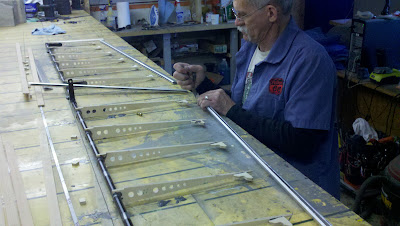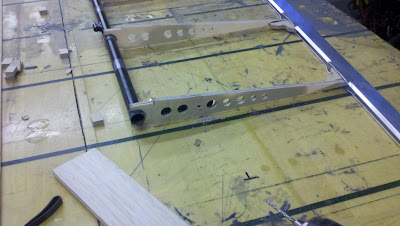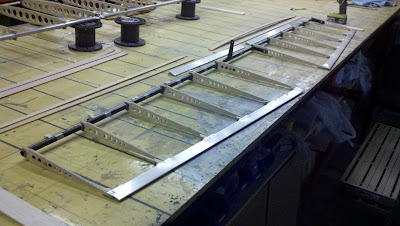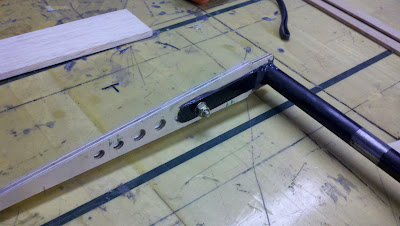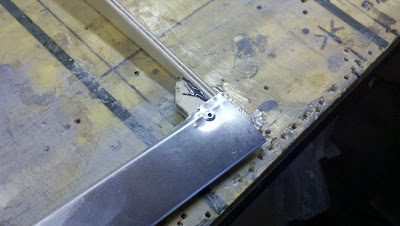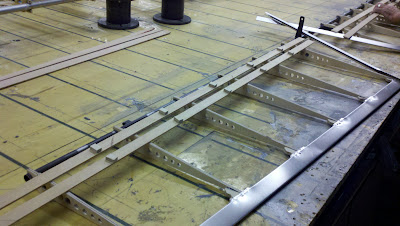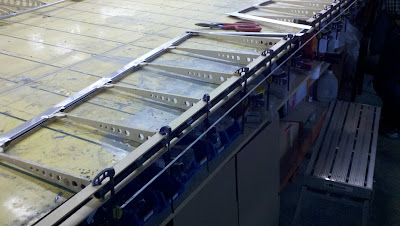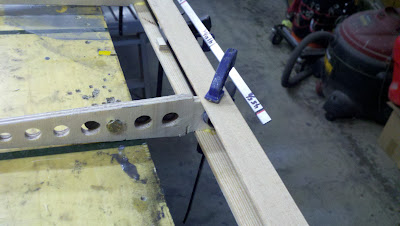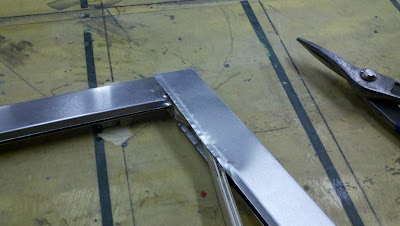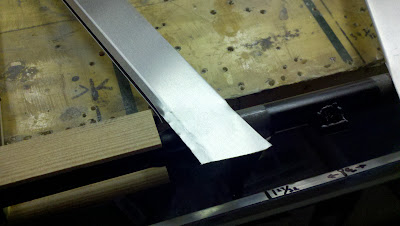
“Blue Highways; Flint Hills”
(c) 2009 by James Wiebe; all material and photos are copyright. Please link to this blog and to www.beliteaircraft.com
1. 20 Miles.
I can see for up to 20 miles, depending on which way I look. Looking south, an expanse of prairie grass heads downslope, along my impromptu runway, to a line of trees which look to follow a creek. For my miles beyond that, the terrain slowly rises and eventually disappears in a flint hills ridgeline.
To my east, far in the distance, are what appear to be cell phone towers. They are perhaps four miles away, at the top of a ridgeline. I can also see continuous green pasture between me and the cell towers. The landscape is typical of the flint hills. It is beautiful, and alive. I hear the constant buzzing of insects. Earlier, after my airplane came to rest, a group of cows stared at me. They wondered if I had brought Alfalfa pellets. No, I hadn’t, and they wandered off.
Just a couple of hundred yards to the north, the land forms a grassy knoll and then the terrain disappears behind the back side of the knoll. The cows went that way.
The terrain to my west is grass, with a road far off in the distance. I see a car on the road; it is visible because it is traveling rapidly and raising a ball of dust. Later, I will decide to hike towards that road.
I have a Garmin GPS, which is very helpful. It tells me that five miles away, is the Kansas State Turnpike, I-35. To my south, about 1.5 miles away, is county road 50. A line of trees that I mentioned in that direction, and I’m not sure if the road is before or after the trees. Is that creek over there as well? I have no idea, and the GPS doesn’t offer that clue.

Now I am attempting a hike northeast, towards county road 70 on the GPS. I can’t get to the road; I am stopped by another creek. The creek was slightly flooding as a result of heavy rains a day or two ago. I could have crossed it, but it would have meant soaking my ankles. I see a tree which has fallen perfectly across the creek. Considering giving it a try; but NO, I don’t want to risk soaking myself, my Nikon D300 camera, my GPS. So I head back to the airplane.

I am in the middle of the flint hills. I am sitting on the wheel of my airplane. It is sitting at an odd angle, with the left wingtip 6 feet above the ground, and the right wingtip one foot above the ground. I’ve pulled the seat pad out of the airplane, and I’m using it to keep some cushion between me, the wheel, and the grass.
There are no roads here. There is no airport. I am here. My airplane is with me, sitting, wounded.

2. Formation flying.
The day started with last minute details for a flight to Airventure, Oshkosh, Wisconsin. We wanted to fly our demonstrator airplane up, as a promotion for our new aircraft and our new company, Belite Aircraft.
My friend Terry Alley and my coworker Gene Stratton had been working with me at Jabara airport (KAAO) to make some last minute tune-ups to the bird. We’d installed a rudder trim tab because of nagging right foot pressure, and that had solved a problem. The plane had been loaded. The electrical system on the plane was acting up, probably due to a bad voltage regulator. In a fit of disgust, I had disconnected the voltage regulator. Electric operation is not a necessity in an ultralight.
Our demonstrator airplane was flying nicely.
Terry and I took off in a formation flight towards Emporia. It was an extraordinarily beautiful morning! Blue skies. Occasional radio calls. A little maneuvering for photographs on the part of Terry. As we reached Cassoday, KS, I no longer hear from him, and decide that he has headed back home. He’d told me he’d break off there.
The plane is remarkable, and has a gas gauge which shows my fuel quantity. It showed a full tank at the start of the flight. I had ‘tankered’ an additional 2 gallons of fuel so I could land and refuel anywhere, if necessary. (FAR 103 regulations prohibit a tank capacity of more than 5 gallons).
My fuel gauge hung on full for a while, then started to descend a little too quickly through ¾, ½, and down to ¼ tank. Over the flint hills, there are few options for roads, but many options for pastures. Even though only 8 miles short of the Emporia airport, I determined that the smartest thing to do would be to make a landing, refuel, and finish the leg. (Why was the fuel consumption so high? Probably an incorrectly set carb. We’ll figure that out after Oshkosh.)
I decided that instead of staggering into my Emporia on fumes, I’d make a precautionary landing and resolve the issue.
You are probably thinking that the airplane broke on landing, because of a rock or cow turd. Not so… the landing was silky smooth; the plane floated onto the field of grass as if I had edged onto a down pillow. It was smooth.
3. Landed on the prairie.
I’m grinning. I don’t even shut the engine down; it idles smoothly as I refuel the plane.
After adding two gallons of fuel from my spare tank, I tried to take off.
Trouble; I can’t get enough airspeed. The grass is a little high and I may have a touch of tailwind. I try to takeoff twice; it doesn’t get airborne. However, I’ve got several degrees of downslope on the hill, and I can taxi up the hill for a long ways; no problem! I can resolve the takeoff speed issue.
Turning around, I headed up the hill. As I approached the spot to turn around and try again, my right main gear axle sheared off. In a quarter second:
The right landing gear collapsed as the tip of the steel, now without a wheel, punched into the dirt, and bit hard.
The propeller disintegrated. All three blades snapped off.

Dirt was thrown on the plane as the propeller augured through the ground.
The engine quit, now.
The right wingtip of the plane hit the ground, bending a clip.

“Well, that’s that”, or something to that effect went through my head.
Stunned.
Unhurt.
Bewildered.
The plane is completely undamaged, except for the prop, the right gear (it looks like a pretzel), the bent clip and unknown engine damage, if any. There is absolutely no damage to the fuselage. The gear attachment points are unharmed.
Already considering what’s and why’s.
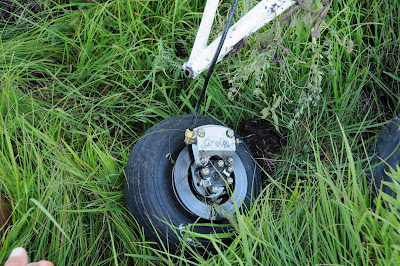
4. Cellphone service.
I pull out my cell phone and call my wife. Over towards the northeast, I can see the cell phone tower which is almost certainly carrying the signal to my wife. The connection quality is perfect.
I’m bright and cheery as I talk to her. She asks if I'm at Emporia. No... I carefully explain the sequence of events. She is not angry, (for instance: why did I try and take this trip in an ultralight?!) but seems just pleased that all has ended well. She and I begin to strategize about how to get the plane back to Wichita, so it can be trucked to Oshkosh. We agree to leave the retrieval task to our able helper Gene Stratton, also my friend Terry Alley.
A weird thing happens. A few moments later, my cellphone rings. I look at the caller ID, and it is someone calling from CRU-WiebeTech, my old company. She is of course completely unaware of my circumstances. She has a marketing question. I answer it, I consider telling her what has happened, I think better of it. I say nothing about my where and why I am.
4 hours pass.
I took a hike. I got sweaty. I rue my decision to not pack any more water in the airplane. I had one diet Dr Pepper, and it is long gone.
My daughter calls me (my cell phone service continues to be perfect.)
To quote Bill Curtis, “I found the internet!”. My USB dongle and my laptop computer works great, and I get caught up on my personal email for the first time in a while. I send an email to Don Hackett, at Wichita State University, hinting that I am in the middle of the Flint Hills with a big story to tell. He emails me back, saying he can’t wait to read it, that it will certainly entertain my grandchildren some day.

Since I am back at the airplane, I work on the computer while I am sitting either on the airplane tire (the good one, not the snapped one) or by sitting on a cushion on the ground. I consider that if I had to spend the night, I could do so, as I brought a sleeping bag. But I do not consider the ticks. Hours later, when I was safely back home, I look at my ankles and see that they are covered with small ticks. Dozens of ticks; even smaller than a pinhead.
I’m told by my wife that Gene and Terry are coming, also my daughter, Jennifer. If they can get in the pasture, we’ll have no problem dismantling the wings and loading the plane on a trailer.
There they are, driving across a sea of green grass.
Please hand me a bottle of water.
5. Those last two italicized lines were a fantasy.
Gene, Terry and Jennifer are not here yet. It is late afternoon, and I am very thirsty. My cellphone continues to work great. Kathy and I continue conversations on marketing and logistic issues related to the upcoming Airventure show.
Jennifer calls and texts me, they are very close to me. I have picked a flint hills pasture which is several square miles in size. They have found a locked gate. They want to know if they should find someone with a key first, or hop the fence and bring me water and food. I ask them to hop the fence. I think they are about a mile east of me; if I walk towards them, and they walk towards me, we’ll meet, right?!
I’m eager for the water. I stupidly leave my cap and GPS at the airplane, but I do take my cellphone. I start hiking east. My wife calls again, and I explain what we are trying to do.
About 20 minutes later, I see two dots far away. One is wearing a bright orange shirt – that’s got to be a Belite T-shirt, which is one of our corporate colors. The other is my daughter. I call Gene. He can’t see me, but I can see him plainly. I tell him to turn left 45 degrees and walk towards the sun. He proceeds to do so, then his image dot disappears as he descends into a gully. I also descend into another gully. 15 minutes later, we are both out of our respective gullys, and finally in sight of each other.
When we finally meet, he and Jennifer are on one side of a barbed wire fence, I am on the other. He hands me a bottle of water. It is gone inside me immediately. He hands me a Diet Dr Pepper, which is still cold, and a cheeseburger.
6. What does an Angel look like?
We have to figure out how to get the trucks and trailer from the locked gate, across a pasture, a mile to the East, over to the barbed wire fence, through the fence, to the downed aircraft, a mile or more behind me.
My friend Terry remained at the locked gate, then went looking for someone with a key.
While all of this is being considered, Gene spots a pickup truck driving slowly across the flint hills, inside the pasture which contains my airplane! He hands me his hiking pack, and takes off quickly towards the truck.
Jennifer and I walk at a more leisurely pace towards the truck.
Gene catches the truck, when Jennifer and I arrive a few minutes later, Gene is sitting in the cab with our Angel. His name is Calvin, he works for the landowner, and he is here to feed the cattle. He was unaware that a broken airplane is in his ranchland. He is eager to help.
Calvin helps us – taking us through a gate in the barbed wire fence, then to the locked gate beyond the next pasture. He reaches in his glove compartment, pulls out a key, and a moment later the gate is open. Our aircraft trailer is sitting there (it’s actually Terry’s) but Terry’s truck is gone. We can’t get him on the cellphone. He’s out looking for a key; but we already have the gate unlocked. Gene and Calvin drive off, looking for Terry. Jennifer and I get in the company pickup truck, which we turn on and crank up the AC. We talk. We smile. Jennifer is so glad to see me.
Eventually everyone returns. Terry has found some other people, who were trying to get ahold of Calvin. (We already found Calvin.) We all head back towards the downed aircraft. There are three pickup trucks and one aircraft trailer heading across a cattle road in the flint hills. Calvin knows the pasture extremely well. He tells us they recently had heavy rain; he keeps us from heading down gullys.
Soon the work begins on dismantling the aircraft.

7. The cattle watched, and a plane went back to Wichita.The landowner and his wife show up. Another lady shows up. A child is along with the couple, cheerfully tossing alfalfa pellets from the back of yet another pickup truck to the cattle, who have also showed up. There are a great many cows, all milling around the pickup trucks, the airplane, and the people.

There isn’t a great deal of work involved with disassembling this airplane. The wings unbolt, the flaperon cables unclip, the flaperons also unbolt. In about an hour and a half, the airplane changes from wounded to disassembled and stored on the trailer and one of the pickup trucks.


3 hours later, we are back in Wichita, at our workshop.
8. Grateful.
I had the opportunity to muse on things which I am grateful for, and people rose to the top of my list. First of all, to my wife, who shares this adventure with me. To Gene, who has become more than a coworker. I value his counsel and ability to get any job done. To Terry, who quickly has become a great friend. And of course, my daughters, who are intelligent and loving. Thank you Jennifer, for your insistence on being part of the rescue squad.
I am especially grateful to Calvin and the others who helped us get the plane out of their grazing land. Thank you! I’m sorry I didn’t get all your names. Your cheerfulness and desire to help made an indelible, wonderful impression on me. I was worried that I had landed in your pasture. You were simply pleased that I wasn’t hurt.
Finally, I am grateful to God, whom I believe in. The gear was destined to fatigue and shear off, sooner or later. It could have happened while landing on concrete, or it could have happened while taxing around in the flint hills. My demonstrator plane will be at Oshkosh, hardly the worse for wear, but it’s not flyable until the engine is torn down. The shaft still turns freely, but there clearly is a raspy feel to it. Cracked bearing? Bent crank? We’ll see. Also, we'll redesign the wheel axle shaft immediately to improve strength.
9. Final thoughts?
Whose fault was this? I’ll stop the debate right now – it’s entirely mine. Inadequate fuel planning; perhaps improper carb setup; inappropriate landing location. The plane handled the situation with sweetness amidst difficulty.
I WILL NEVER FORGET THE FEELING OF SITTING IN THE AIRPLANE, SUCCESSFUL, AFTER SOFT UPHILL LANDING, WITH ENGINE IDLING, ON THE FLINT HILLS PRAIRIE, SOAKING IN TO ME...
William Least Heat Moon writes of Blue Highways. This was mine.
--- James Wiebe, written somewhere in the flint hills near Olpe, Kansas, and completed the following day. Wednesday, July 22, 2009, and Thursday, July 23, 2009.









































